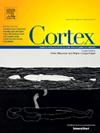Putting things into perspective: Which visual cues facilitate automatic extraretinal symmetry representation?
IF 3.2
2区 心理学
Q1 BEHAVIORAL SCIENCES
引用次数: 0
Abstract
Objects project different images when viewed from varying locations, but the visual system can correct perspective distortions and identify objects across viewpoints. This study investigated the conditions under which the visual system allocates computational resources to construct view-invariant, extraretinal representations, focusing on planar symmetry. When a symmetrical pattern lies on a plane, its symmetry in the retinal image is degraded by perspective. Visual symmetry activates the extrastriate visual cortex and generates an Event Related Potential (ERP) called Sustained Posterior Negativity (SPN). Previous research has shown that the SPN is reduced for perspective symmetry during secondary tasks. We hypothesized that perspective cost would decrease when visual cues support extraretinal representation. To test this, 120 participants viewed symmetrical and asymmetrical stimuli presented in a frontoparallel or perspective view. The task did not explicitly involve symmetry; participants discriminated the luminance of the patterns. Participants completed four experimental blocks: (1) Baseline block: no depth cues; (2) Monocular viewing block: stimuli viewed with one eye; (3) Static frame block: pictorial depth cues from elements within a flat surface with edges; (4) Moving frame block: motion parallax enhanced 3D interpretation before stimulus onset. Perspective cost was calculated as the difference between SPN responses to frontoparallel and perspective views. Contrary to our pre-registered hypotheses, the perspective cost was consistent across all four blocks. We conclude that the tested visual cues do not substantially reduce the computational cost of processing perspective symmetry.
正确看待事物:哪些视觉线索有助于自动的视网膜外对称表征?
当从不同的位置观察物体时,物体投射出不同的图像,但视觉系统可以纠正视角扭曲并识别不同视点的物体。本研究研究了视觉系统分配计算资源来构建视点不变的、视点外的表征的条件,重点研究了平面对称性。当对称图案位于平面上时,其在视网膜图像中的对称性会因透视而降低。视觉对称激活层外视觉皮层,产生事件相关电位(ERP),称为持续后向负性电位(SPN)。先前的研究表明,在次要任务中,由于透视对称,SPN会减少。我们假设当视觉线索支持视网膜外表征时,视角成本会降低。为了验证这一点,120名参与者观看了以正面平行或透视的方式呈现的对称和不对称刺激。这项任务并没有明确地涉及对称性;参与者区分图案的亮度。参与者完成四个实验模块:(1)基线模块:无深度提示;(2)单目观看阻滞:单目观看刺激;(3)静态框架块:图形深度线索来自平面内的元素与边缘;(4)运动帧块:运动视差增强刺激发生前的三维判读。视角成本计算为SPN对正面平行视图和视角视图的响应之差。与我们预先注册的假设相反,所有四个区块的视角成本是一致的。我们得出结论,测试的视觉线索并没有实质性地减少处理透视对称的计算成本。
本文章由计算机程序翻译,如有差异,请以英文原文为准。
求助全文
约1分钟内获得全文
求助全文
来源期刊

Cortex
医学-行为科学
CiteScore
7.00
自引率
5.60%
发文量
250
审稿时长
74 days
期刊介绍:
CORTEX is an international journal devoted to the study of cognition and of the relationship between the nervous system and mental processes, particularly as these are reflected in the behaviour of patients with acquired brain lesions, normal volunteers, children with typical and atypical development, and in the activation of brain regions and systems as recorded by functional neuroimaging techniques. It was founded in 1964 by Ennio De Renzi.
 求助内容:
求助内容: 应助结果提醒方式:
应助结果提醒方式:


